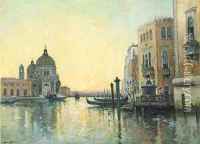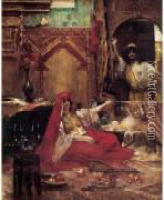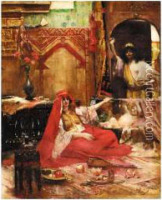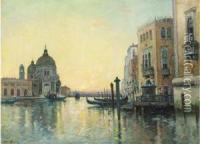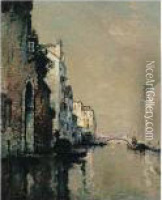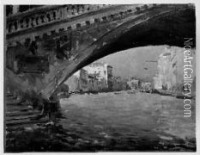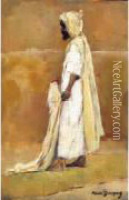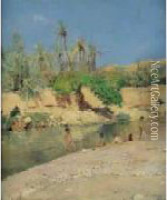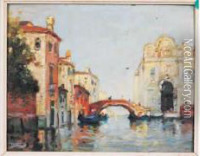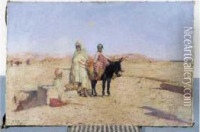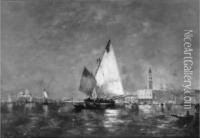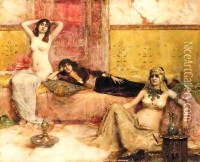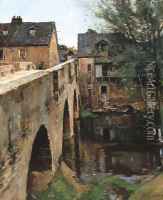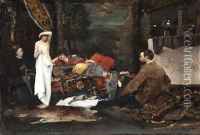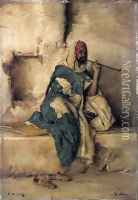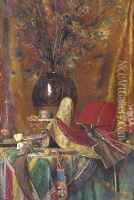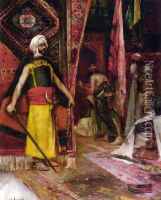Maurice Bompard Paintings
Maurice Bompard was a French Orientalist painter, born in Rodez, France, in 1857. His work was influenced by his travels to North Africa and the Middle East, regions that inspired many European artists during the 19th and early 20th centuries with their exotic landscapes, light, and culture. Bompard studied at the École des Beaux-Arts in Paris and was a pupil of Jean-Léon Gérôme, a prominent French painter and sculptor who was deeply involved in the Orientalist movement. Gérôme's influence is evident in Bompard's attention to detail and his fascination with the depiction of light.
During his career, Bompard exhibited his works at the Paris Salon, an annual art event that was the official art exhibition of the Académie des Beaux-Arts in Paris. He became known for his rich and vibrant scenes that captured the essence of the places he visited. Bompard's paintings often portrayed daily life, landscapes, and historic monuments of the East, which appealed to the tastes of European audiences seeking the allure of the 'other.'
Bompard's travels took him to destinations such as Egypt, where he was captivated by the ancient civilization's monumental architecture and the bustling life on the streets and markets. His experiences in these foreign lands provided a vast repertoire of subjects for his paintings, which were characterized by a harmonious blend of light, color, and meticulous composition.
Maurice Bompard's works contributed to the Western perceptions of the East during a time when Orientalism was at its peak. His art provided a romanticized view of the Orient, which, while often criticized today for its lack of cultural authenticity and colonial overtones, was a significant aspect of European art history during his lifetime.
The artist continued to paint and exhibit throughout his life, and his work has been collected and is displayed in various art galleries and museums. Maurice Bompard passed away in 1936, leaving behind a legacy as one of the many European artists who sought to capture the allure of the East through the lens of Orientalist art.
